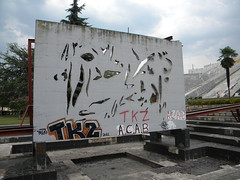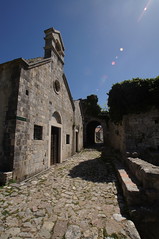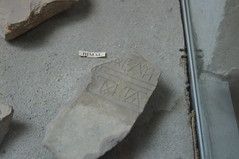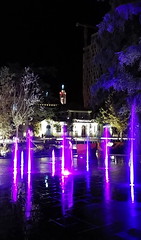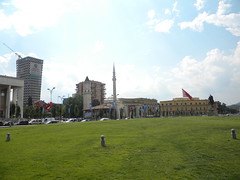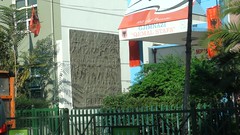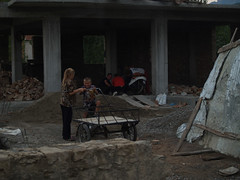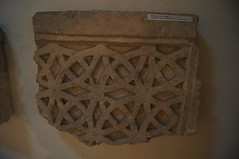Qarku i Tiranës
Tirana County (Albanian: Qarku Tiranë), officially the County of Tirana (Albanian: Qarku i Tiranës), is a county in the Central Region of the Republic of Albania. It is the tenth largest by area and the most populous of the twelve counties, with more than 912,000 people within an area of . The county borders on the Adriatic Sea to the west, the counties of Durrës to the northwest, Dibër to the northeast, Elbasan to the east and Fier to the southwest. It is divided into five municipalities, Tirana, Kamëz, Kavajë, Rrogozhinë and Vorë, with all of whom incorporate twenty-nine administrative units.
Geographically, Tirana extends from the high and rugged Skanderbeg Mountains in the east to the flat shores of the Albanian Adriatic Sea Coast along the Mediterranean Sea. Due to its location and the close proximity to the Adriatic Sea, its climate is particularly influenced by a Mediterranean climate with four distinct seasons. Two of the country's fourteen National Parks are located in the county, with Dajti in the center and Divjakë-Karavasta in the southwest. Historically, Tirana has been populated since Paleolithic times dating back 10,000 to 30,000 years ago. As argued by various archaeologists, the populated places are filled with Ancient Illyrian toponyms, as its precincts are some of the earliest regions in Albania to be inhabited. Nevertheless, the city of Tirana was established as a city centuries later in 1614 during the Ottoman occupation of Albania.
The capital of the county is Tirana, which is also the largest city by area and population in Albania. A gamma-world-city, it is the most influential economic and political center of the country.
History
Pre-Albanian Independence
The region, which presently corresponds to the territory of the county of Tirana, has been continuously inhabited since the Paleolithic some 10,000 to 30,000 years ago, as suggested by evidence from tools excavated near Mount Dajt's quarry and within the Cave of Pëllumbas. As argued by various archaeologists, Tirana and its suburbs are filled with Illyrian toponyms, as its precincts are some of the earliest inhabited regions in Albania. The Illyrians called the settlement Tërana.
The oldest discovery in downtown Tirana was a Roman house, later transformed into an aisleless church with a mosaic-floor, dating to the 3rd century A.D., with other remains found near a medieval temple at Shengjin Fountain in the eastern suburbs. A castle possibly called Tirkan or Theranda, whose remnants are found along Murat Toptani Street, was built by Emperor Justinian in 520 A.D. and restored by Ahmed Pasha Toptani in the 18th century. The area had no special importance in Illyrian and classical times. In 1510, Marin Barleti, an Albanian Catholic priest and scholar, in the biography of the Albanian national hero Skanderbeg referred to this area as a small village.
Geography
Defined in an area of , Tirana County is located in the Central Region of the Republic of Albania and bordered by the Adriatic Sea to the west, the counties of Durrës to the northwest, Dibër to the northeast, Elbasan to the east and Fier to the southwest. The county lies between latitudes 41° and 18° N and longitudes 19° and 56° E. The highest point is Mali me Gropa at above the Adriatic, though the lowest point is the Adriatic Sea at .
Tirana County from the shorelines of the Mediterranean Sea in the west to the mountains of the Skanderbeg Mountains system in the east. The flat plain of the Albanian Adriatic Sea Coast in the west contains the Myzeqe Plain. To the east lie the hilly, mountainous region of the Skanderbeg Mountains separating the Western Lowlands from the Central Mountain Range. Three rivers traverse the county, including the Erzen River, the Ishëm River and the Shkumbin River along the border with Elbasan County.
Protected areas
The Ministry of Tourism and Environment administers a number of natural sites and protected areas in Tirana County. In conjunction with numerous national natural sites and areas, the National Agency of Protected Areas also manages the Dajti National Park, Divjakë-Karavasta National Park and the Mali me Gropa-Bizë-Martanesh Protected Landscape.
Tourism
The contribution of tourism to the economy of Tirana has significantly increased over the past years. Tourism in Tirana relies intensively on its natural environment, diversified cultural life and its abundance of religious and historical landmarks. The government of Albania maintains a series of popular protected areas within the territory including, Dajti National Park, Divjakë-Karavasta National Park and the Mali me Gropa-Bizë-Martanesh Protected Landscape.





